
1815 - 1891

Jean Louis Ernest Meissonier: 1891
Dutch Burghers
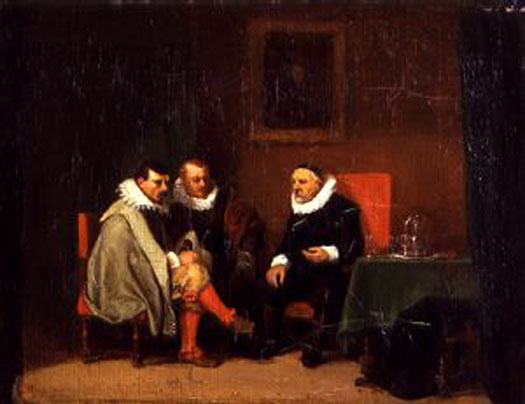
Chess Players
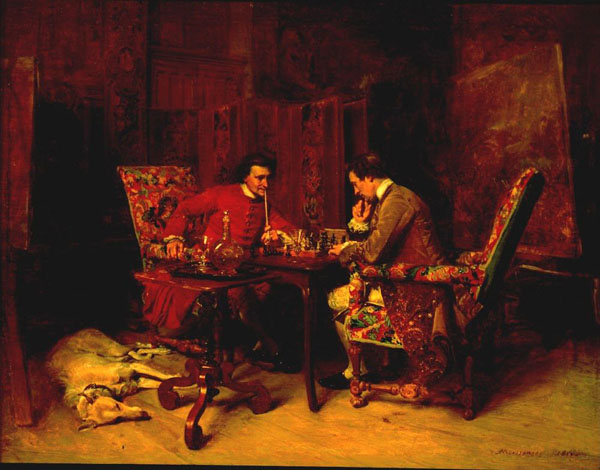
A Game of Chess
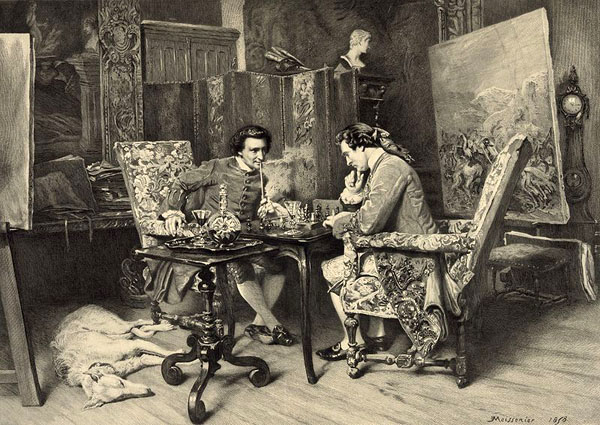
Young Man Playing the Cello
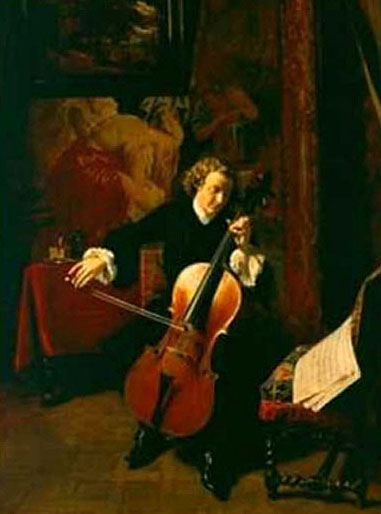
The Guard Room: 1847
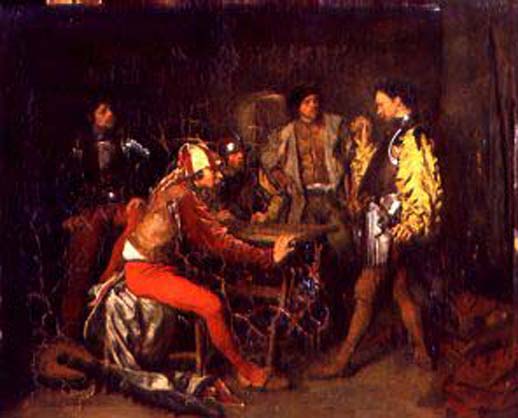
A Game of Piquet

Playing Jeu De Boules
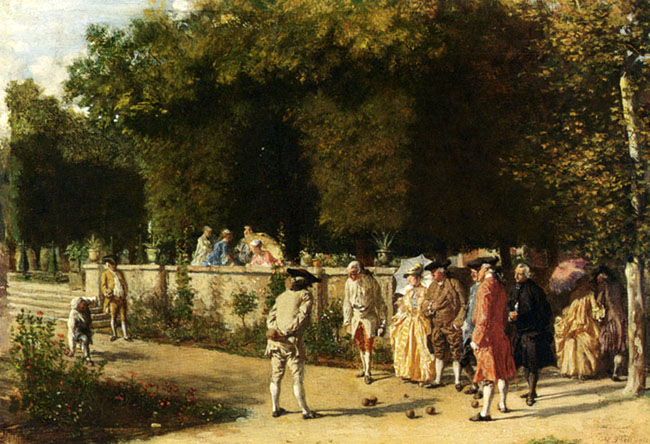
Playing Bowls in the Fosse at Antibes
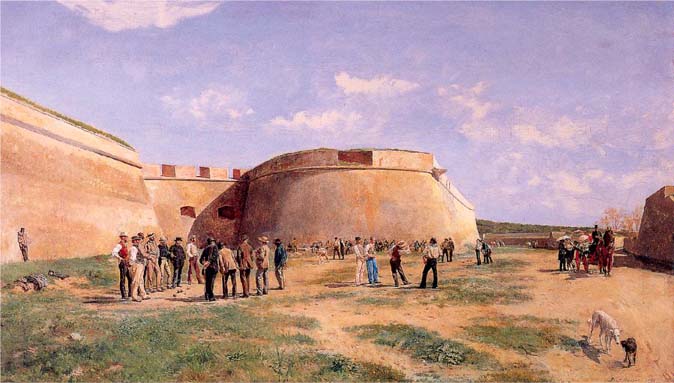
A Smoker
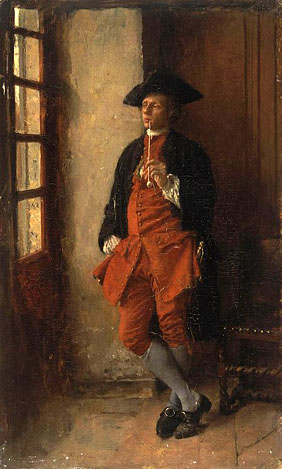
Relief After the Battle
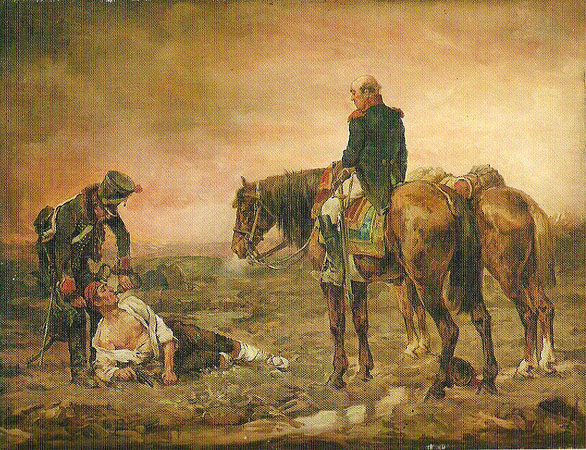
The Quarrel
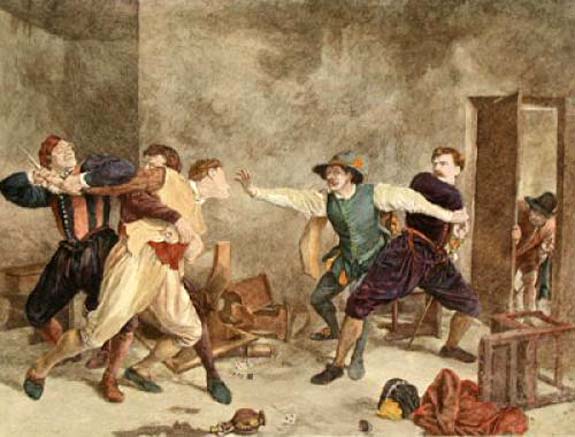
A Painter
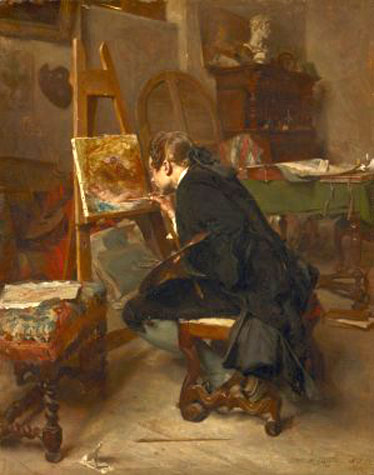
Diderot and his Scribe: 1869
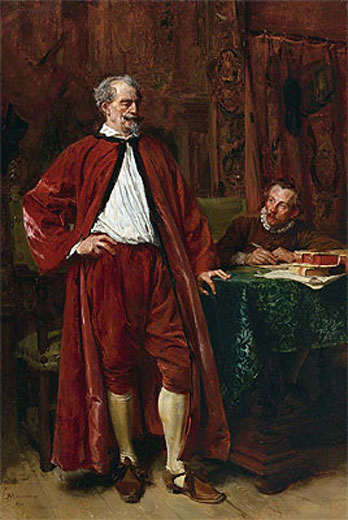
At Diderot's Library: 1859
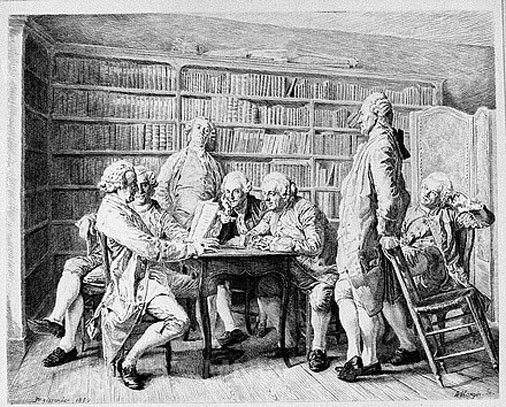
The Emperor at Solferino
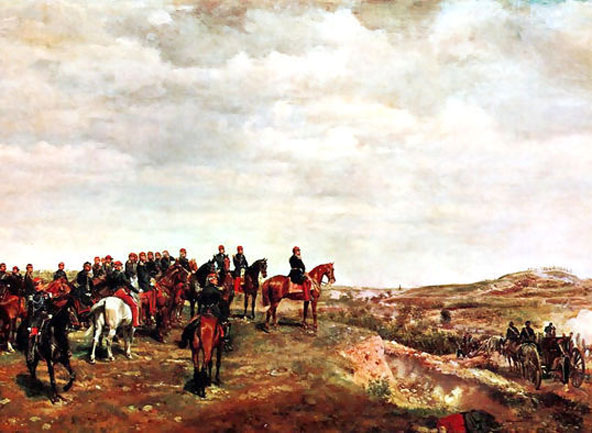
The Battle of Solferino, fought on 24th of June 1859 was the last battle at which both armies were commanded by their monarch; the French army commanded by Napoleon III and his Allies Victor Emmanuel II and his Sardinian Army were victorious over the Austrian Army commanded by Emperor Franz Joseph.
Information - General Desaix and the Peasant: 1867
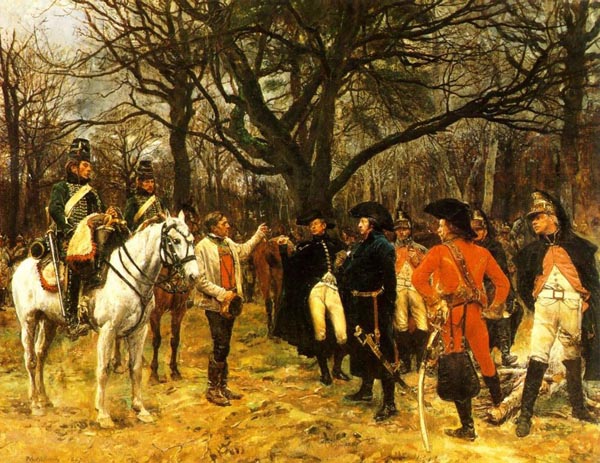
Portrait of Alexandre Dumas, Jr: 1877
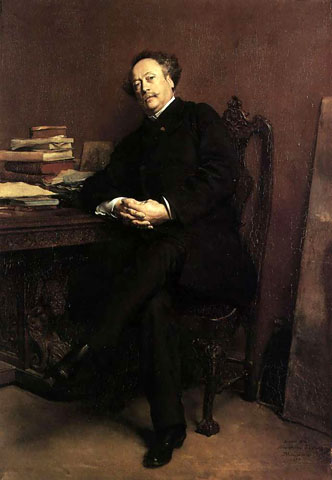
Alexandre Dumas, was a French author and dramatist. He was the son (fils) of Alexandre Dumas, père, also a writer and playwright.
Alexandre Dumas, père, born Dumas Davy de la Pailleterie was a French writer, best known for his numerous historical novels of high adventure which have made him one of the most widely read French authors in the world. Many of his novels, including The Count of Monte Cristo, The Three Musketeers, Twenty Years After, and The Vicomte de Bragelonne were serialized. He also wrote plays and magazine articles and was a prolific correspondent.
The Cuirassiers before their Charge at the Battle of Austerlitz in 1805: 1878
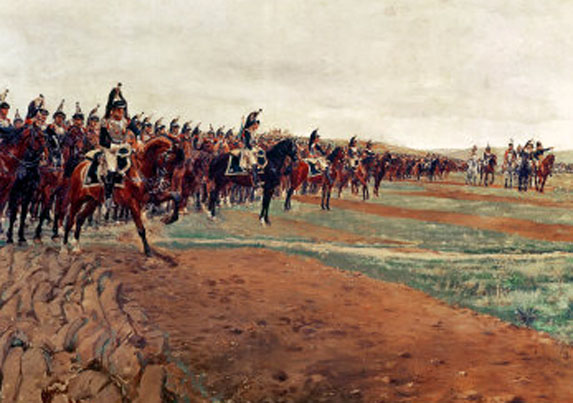
Portrait of Marquesa de Manzanedo: 1872
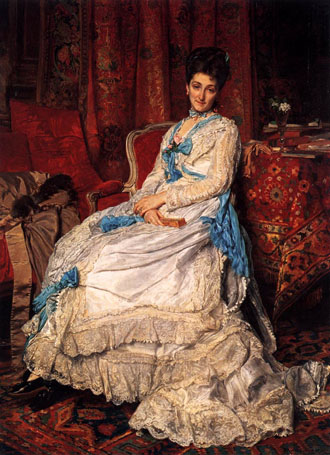
Marquesa de Manzanedo was an intimate friend of the Empress Eugenia Montijo.
The painting is signed and dated 1872.
Self Portrait along the Route De La Salice, Antibes: 1868
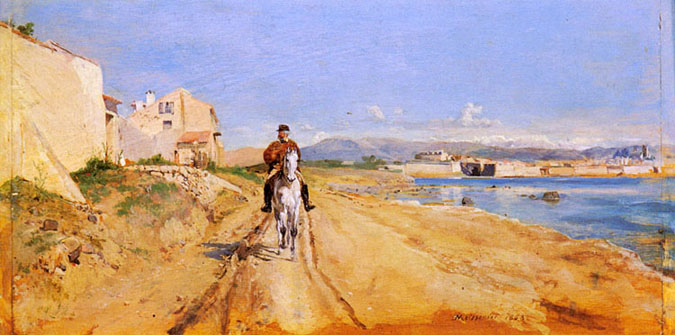
The Barricade

The Barricade, rue de la Mortellerie, June 1848
Ernest Meissonier has painted a Paris scene observed after a barricade was taken by the National Guard during the workers' riots in June 1848. This picture, devoid of pretension or pomposity, is highly original compared with a previous one also depicting a barricade: Liberty Leading the People (July 28, 1830) by Eugène Delacroix. Meissonier's painting is based on realistic observation. Known for his minutely detailed Ancien Régime genre scenes, the painter has here created his masterpiece.
After the Taking of a Barricade
The corpses of rioters, together with the cobblestones that form the remains of a barricade, lie like dummies who have lost their limbs in the center of a Paris street lined with old houses. Ernest Meissonier painted this picture after a watercolor (Musée du Louvre) done at the scene on June 25, 1848, during the workers' riots. These events made for a troubled beginning to the Second Republic, a few months after the February 1848 Revolution. The painter, a captain in the National Guard who was sympathetic to the government, painted the scene that lay before him after a barricade had been taken near to the town hall. The painting is highly original in comparison with another depiction of a barricade, Liberty Leading the People (July 28, 1830) by Delacroix (1831, Musée du Louvre), celebrating the revolution of 1830. There is no pretension to allegory here, no pompous rhetoric. It is the most powerful image to emerge from the events of 1848.
COMPARE THE TWO WORKS OF MEISSONIER AND DELACROIX
Liberty Leading the People, 28th July 1830 by Eugene Delacroix
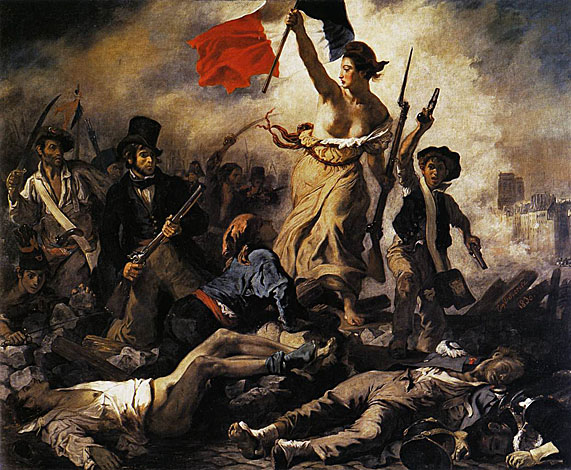
The Liberty Leading the People is a sort of epic narrative of the woman who quits her hearth to espouse a great cause. There is a carpet of bodies beneath her feet as she leads the ravening crowd. Her naked breasts have come to embody the social virtues of Republicanism, a point officially acknowledged by the generous diffusion of the image in the form of French stamps. It is also the first modern political composition. It marks the moment at which Romanticism abandoned its classical sources of inspiration to take up an emphatic role in contemporary life. Delacroix enrolled as a garde national, and in this role he portrayed himself, wearing a top hat, to the left of Liberty. The young drummer brandishing his pistols to the right of Liberty was, perhaps, the inspiration for the character Gavroche, in Victor Hugo's Les Miserables, written thirty years later. Delacroix's influences - Goya, Gros, and, above all, Géricault - are clearly apparent.
Three Smokers
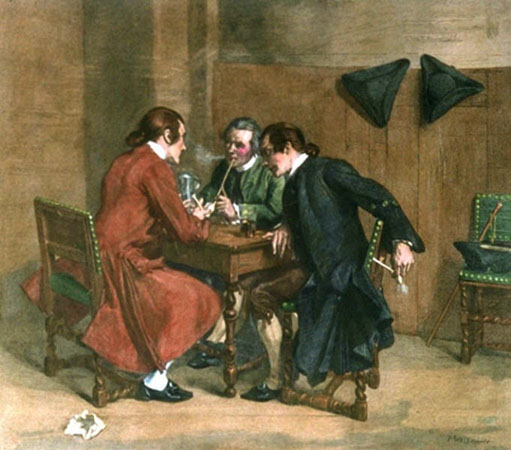
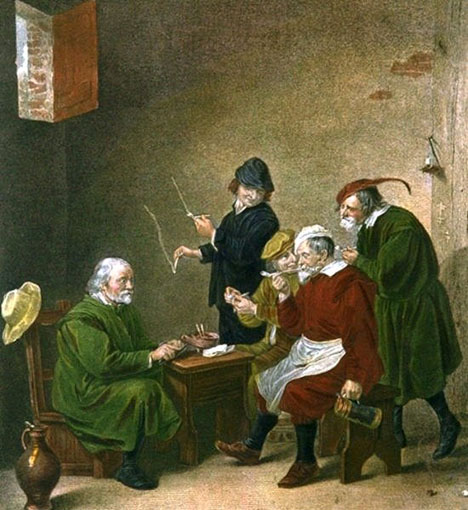
The Sergeants Portrait: 1874
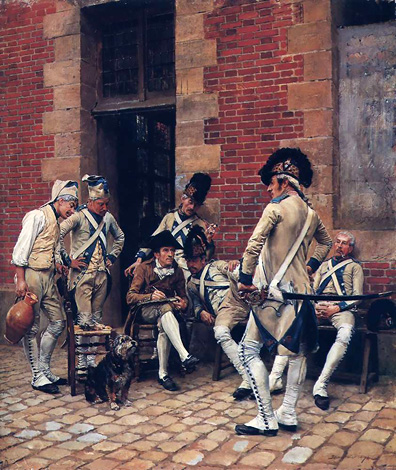
Polichinelle: 1860
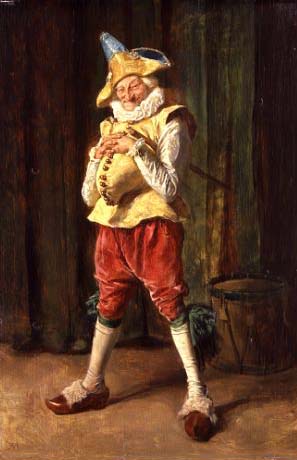
Cuirassiers
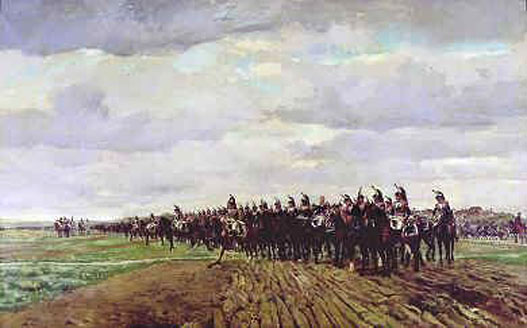
Leland Stanford: 1881

Other Examples of Meissonier's Work
A Cavalier Time of Louis XIII: 1861
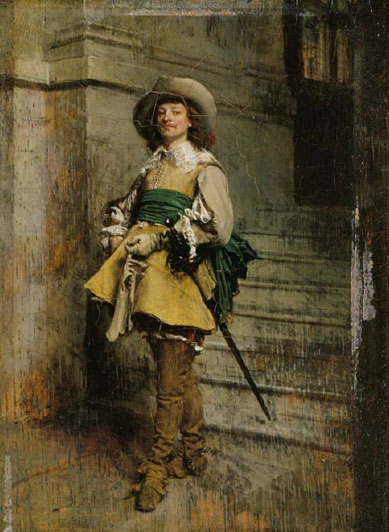
A General and his Aide-de-camp: 1859

A Musketeer - The Time of Louis XIII
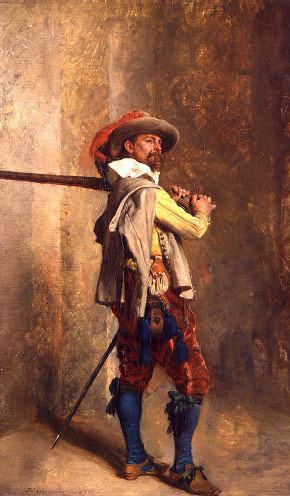
A Sentinel Time of Louis XIII: 1851
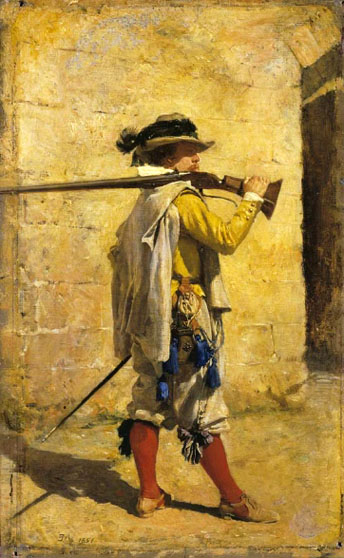
An Abbe
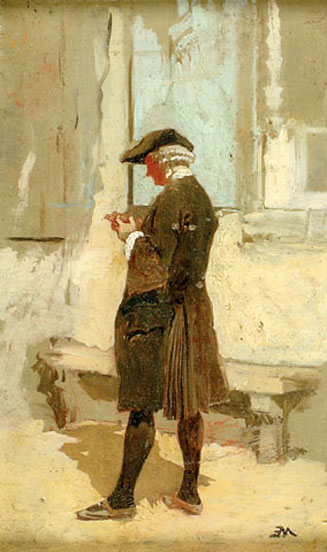
Meissonier is known chiefly for painting small pictures, executed with a detailed but delicate touch. He seems to have based his style on the fine manner of the 17th-century Leiden painters but, as here, often took his subjects from 18th-century everyday life. There are a number of similar single figures in Meissonier's work, dating from the 1850's.
An Artist Showing his Work: 1850
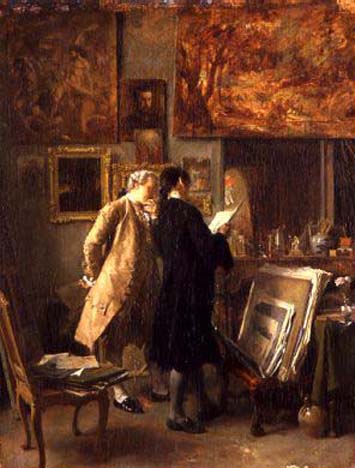
At the Relay Station
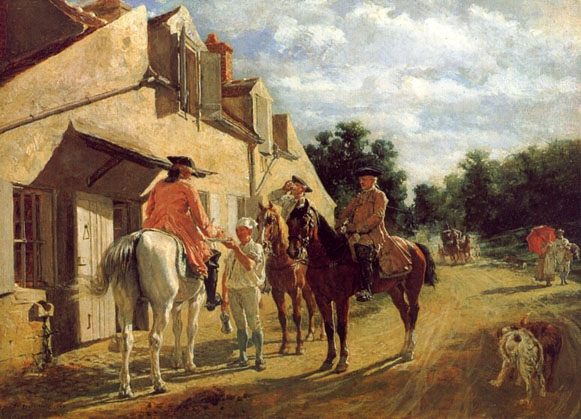
Colonel Felix Massue: 1867
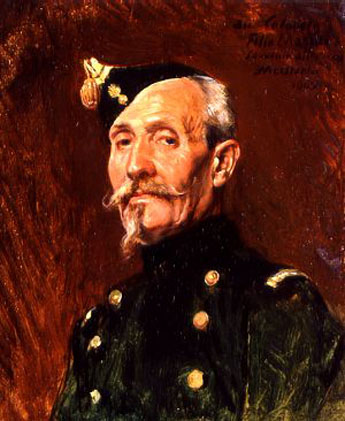
Coup De Vent

Courtyard of the Artist's Studio
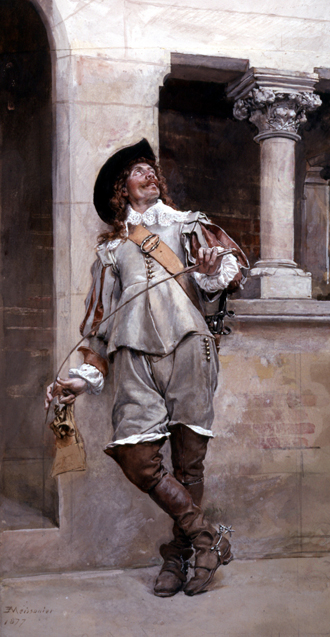
Horseman
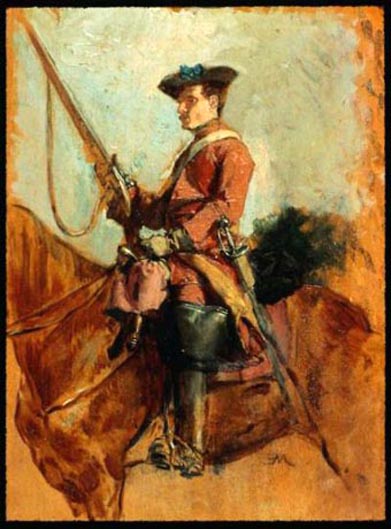
Isaiah: 1838
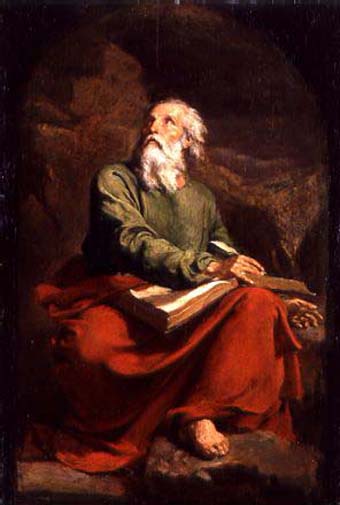
Jean-Louis Ernest Meissonier Self-Portrait
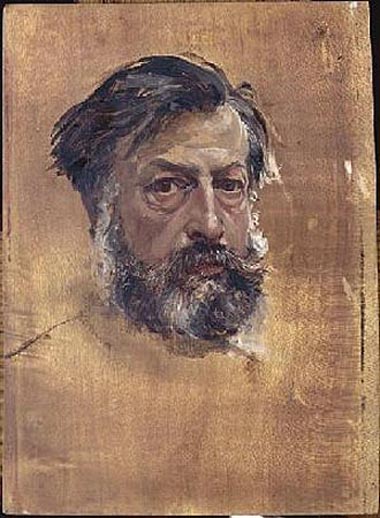
Looking at Paintings by Jean-Louis Ernest
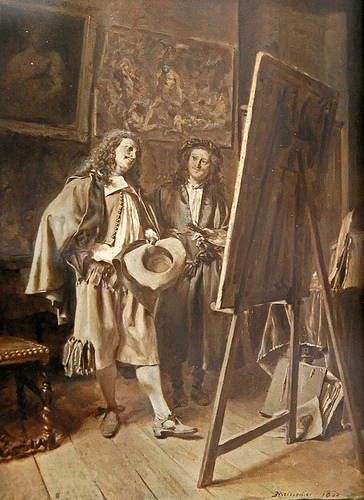
Marshal Ney on Horseback Fighting the Wind
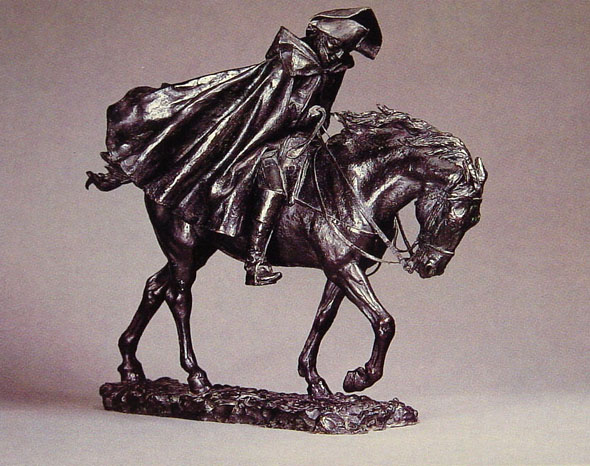
Musketeer: 1870
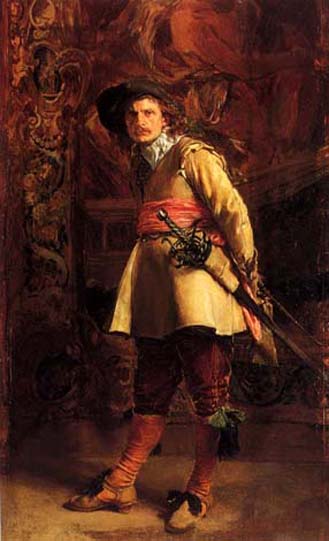
On a Terrace: 1867
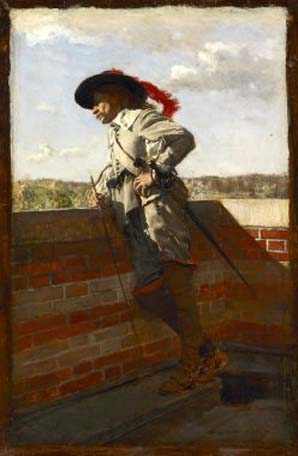
Portrait of a Woman
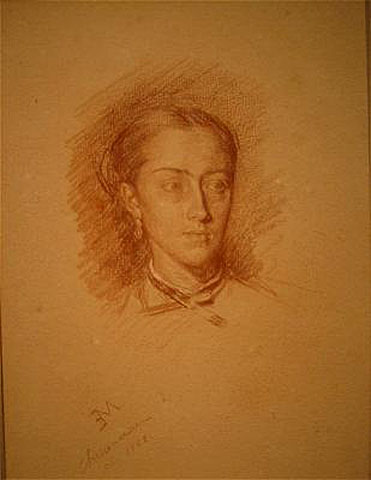
Soldier Playing the Theorbo: 1865
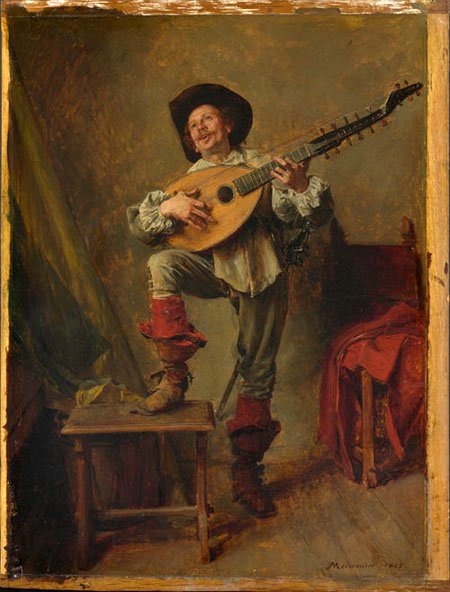
Study of a Seated Cavalier Reading
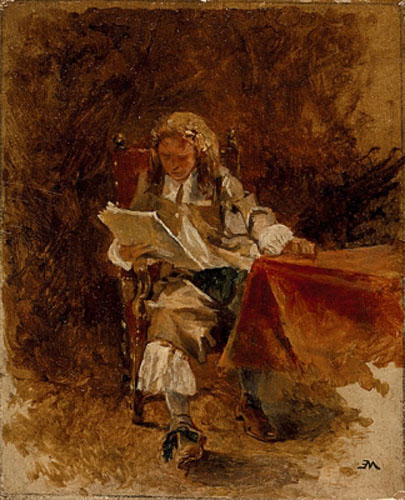
Sunday in Poissy: 1850
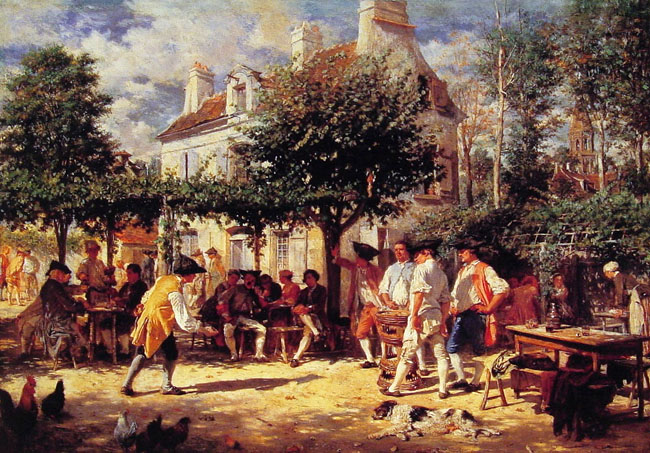
The Card Players: 1872
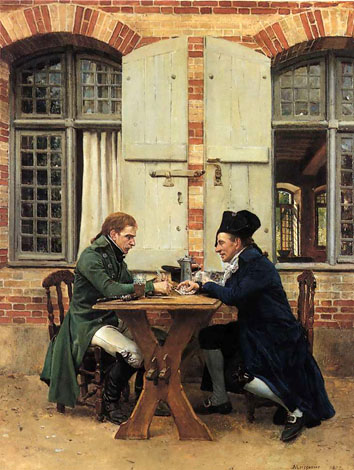
The End of the Game of Cards: 1856
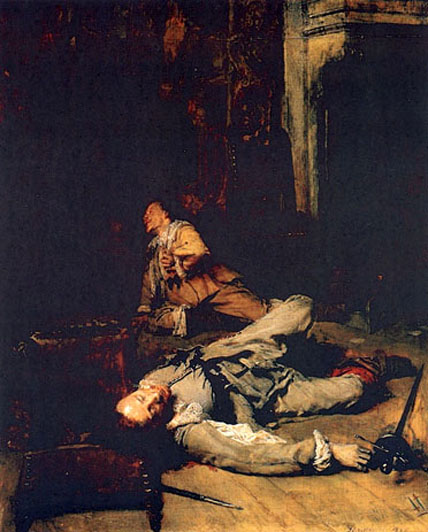
The Guide: 1883
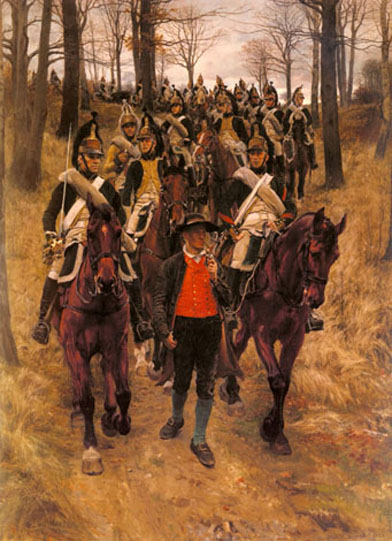
The Halt: 1870
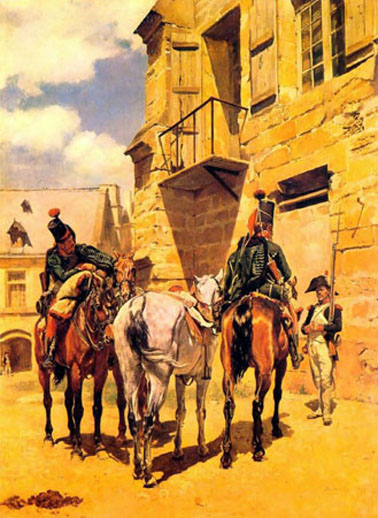
The Hired Assassins: 1852
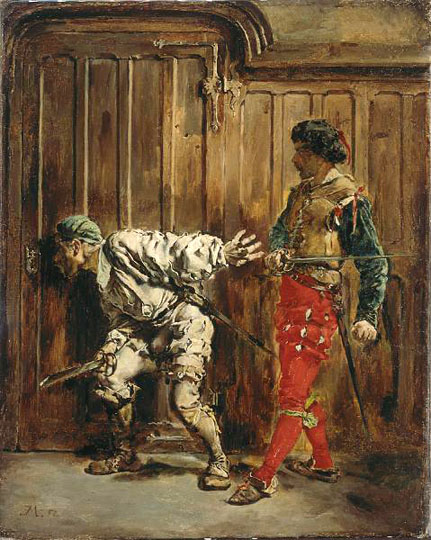
The Lovers of Painting
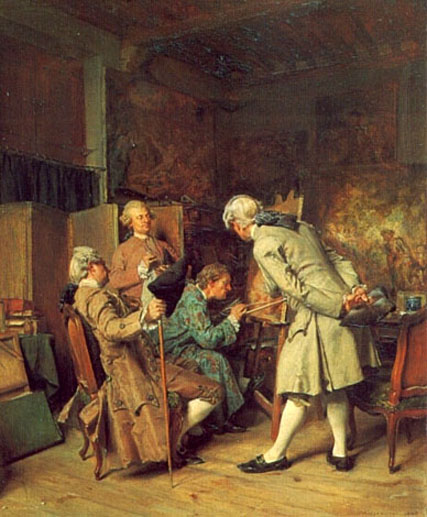
The Painter in his Studio: 1872
(aka Lovers of Paintings)
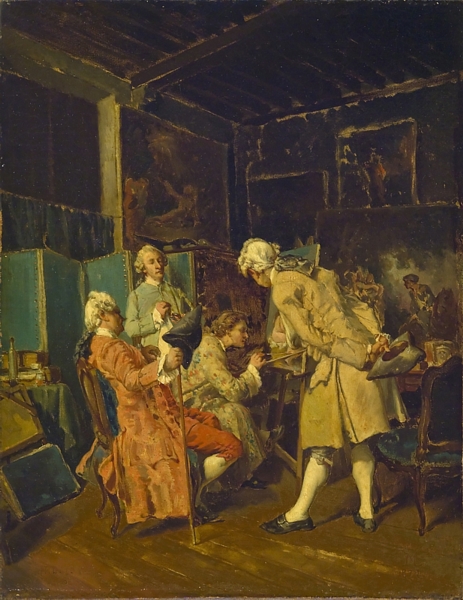
The Officer

The Philosopher: 1878

The Print Collector
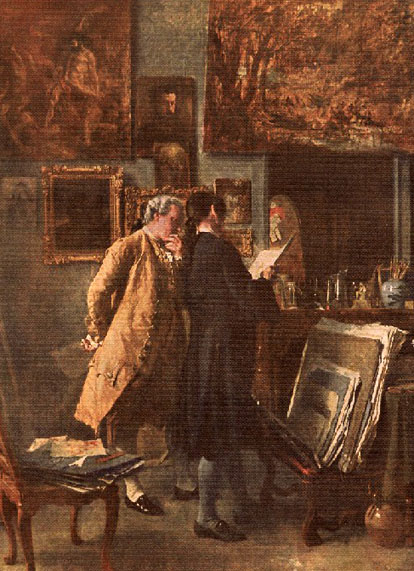
The Reader in White
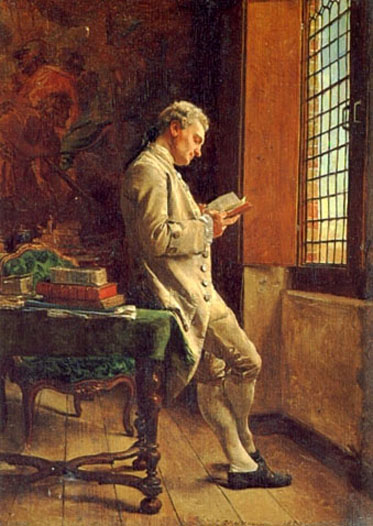
The Recital: 1853
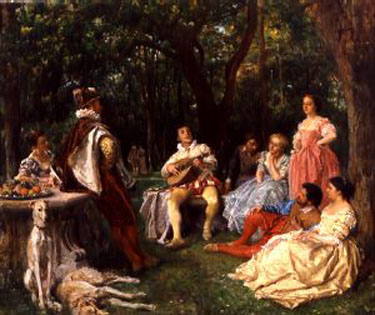
The Roadside Inn: 1865
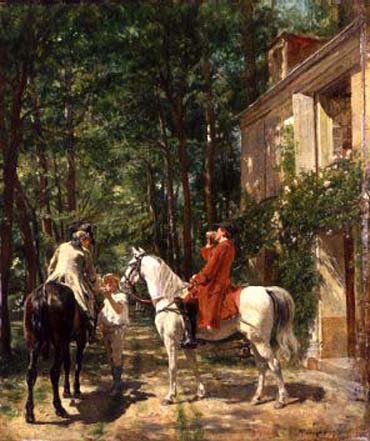
The Ruins of the Tuileries Palace after the Commune of 1871-1877
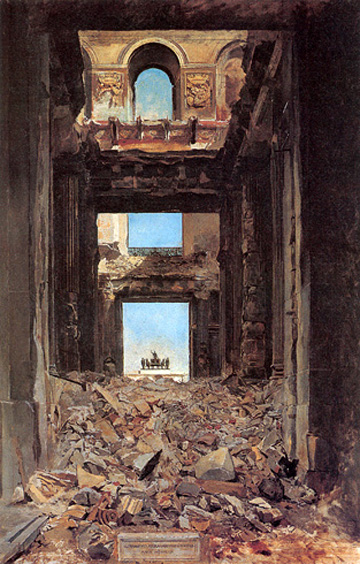
The Siege of Paris: 1870
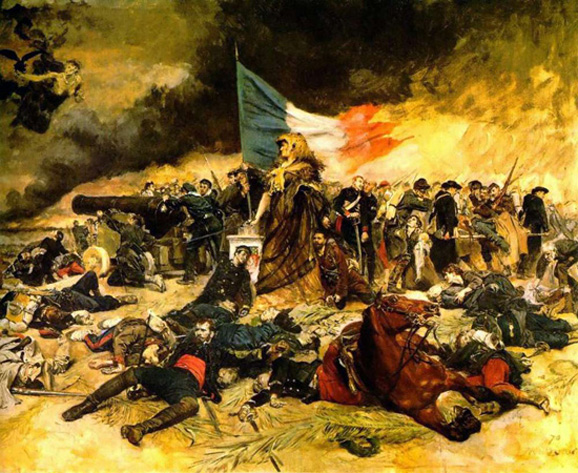
The Scholars Eye

The Sign Painter
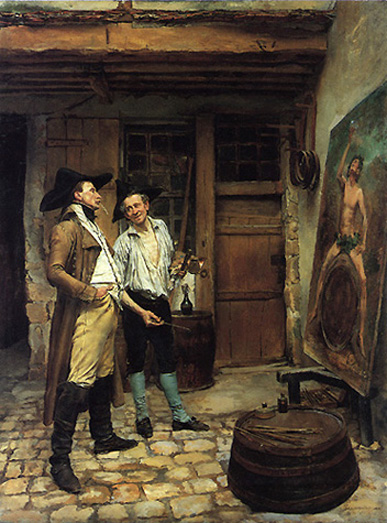
The Sign Painter (Detail)
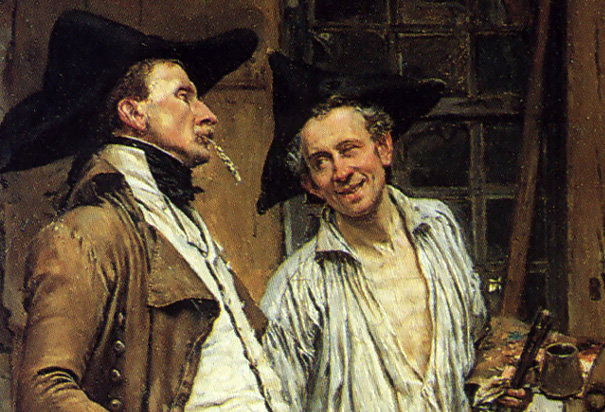
The Traveller
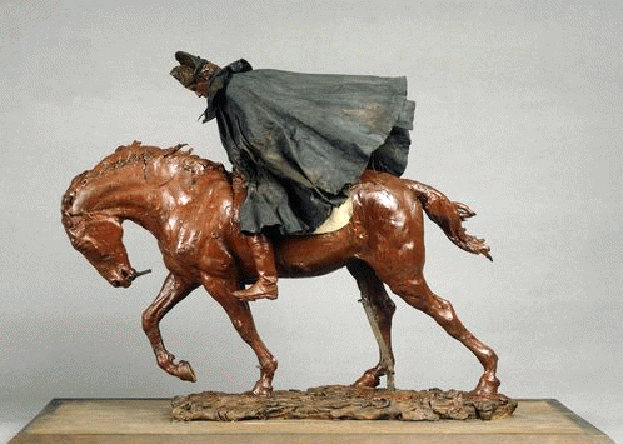
Hunched over his horse's neck, struggling against the wind and lashed by the rain, The Traveler is probably the most remarkable of all the statuettes made by the painter Meissonier and certainly the most romantic. The powerful modeling of the animal, the taut lines of the horse's legs and the man's torso heighten its intensity. But the model is also impressive for its attempt at realism, seen in the use of real material for the coat and the miniature leather reins.
It was not until after Meissonier's death, during two posthumous exhibitions in 1893, that the public discovered his work as a sculptor. He had apparently begun to model about 1840 to prepare his paintings and, being an extremely conscientious artist, he always regarded sculpture as part of the painting process. However it is not always clear which came first in his mind, the statuette or the painting. Several paintings by Meissonier, executed between 1879 and 1885, reproduced this 'Traveler'.
Meissonier himself said that he took great pleasure in modeling. He worked almost solely in wax because it was so malleable. "It is instant burst of creativity… You cannot imagine how absorbing and exciting it is to make a model…" Although he liked the flexibility of wax, he nonetheless prepared his models with excessive meticulous care, modeling the horses over the tiny skeletons sold in art supplies stores.
Two Soldiers
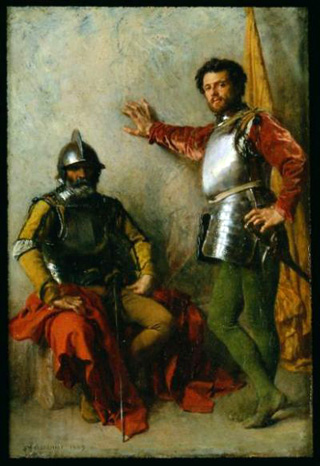
Un Homme D'Armes Et Son Cheval
(aka A Man of Arms and his Horse)
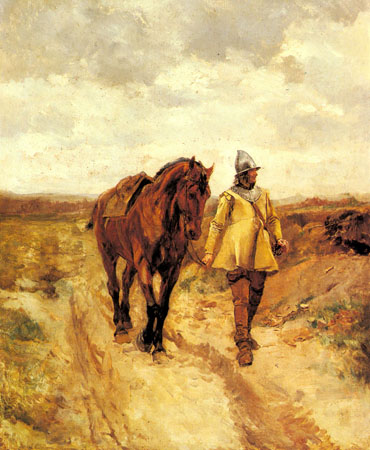
Young Man with a Book
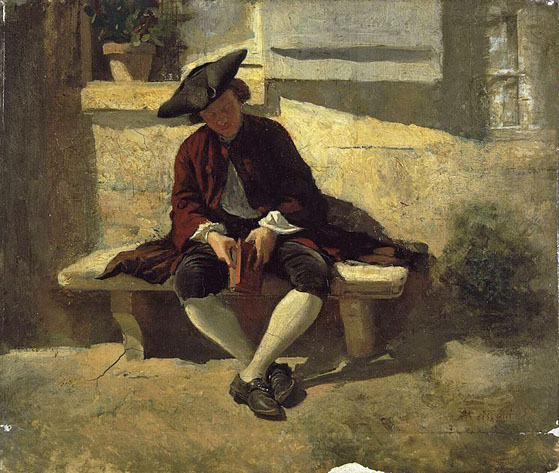
Source: Art Renewal Center
Source: Web Gallery of Art
Return to Pagina Artis
Return to Bruce and Bobbie's Main Page.